This place looks like a cotton castle, a very special beauty that has remained for 2000 years.
In Turkey, you will hear a legend like this: “One day, to meet the moon god Serini, the shepherd boy Andy forgot to milk the goats, causing the milk to flow endlessly, covering the hill, and thus Pamukkale was born.”

Despite such legends, science has explained that the phenomenon of the Pamukkale terraces is the result of long-term calcification. The main component of this white substance is calcium carbonate. When rainwater seeps into the ground, after a long time, it emerges as hot springs, with a large amount of calcium dissolved in this process.
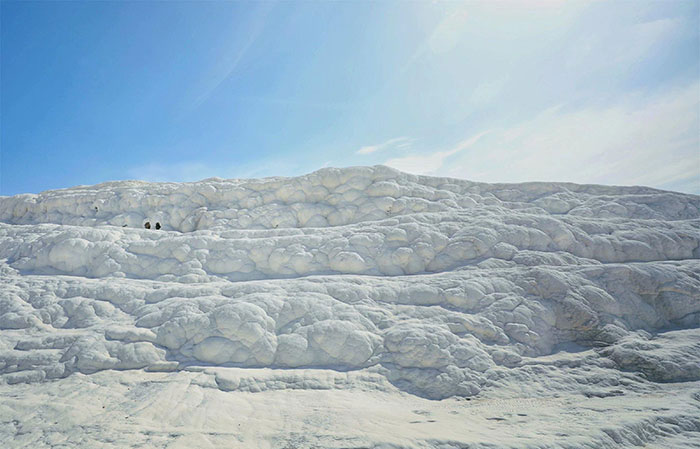
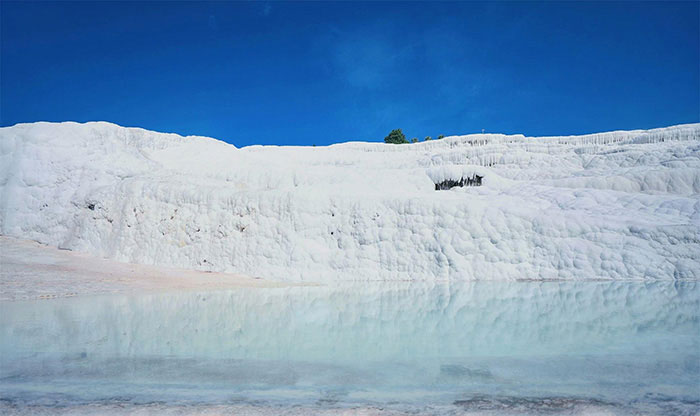
Limestone and minerals in the rock mix with the hot water, flowing down the hillside, where calcium carbonate deposits along the way, gradually forming the calcified terraces.
The most attractive feature of Pamukkale is its layered white terraces, resembling fluffy clouds on the hill, akin to a staircase to heaven.
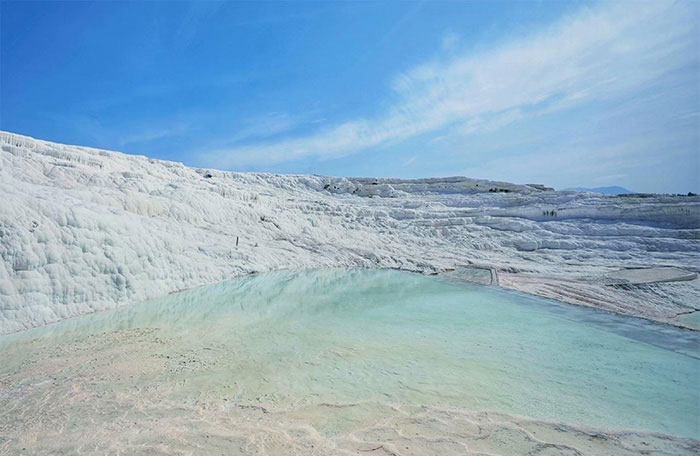
Pamukkale is also a famous hot spring resort with a history of 2000 years. The water temperature here ranges from 36 to 38 degrees Celsius, with a pH of 6, and is very rich in calcium and magnesium.
Soaking in this hot spring can cure joint diseases, skin diseases, gynecological issues, indigestion, and nervous exhaustion. It was the most famous spa center of its time. Notably, even the Egyptian Queen Cleopatra was extremely fond of this place.
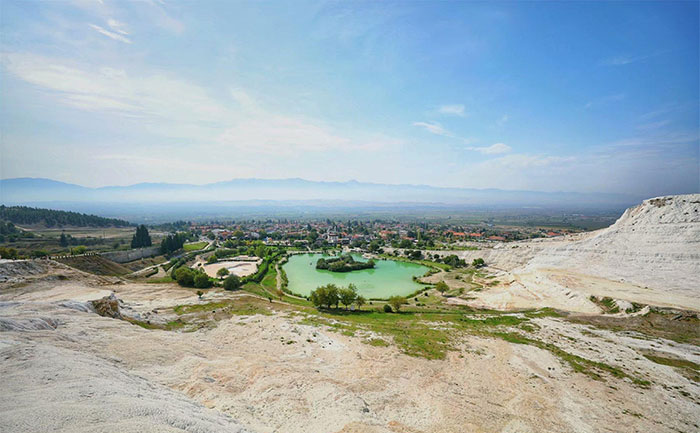
Pamukkale is not only a masterpiece of nature but also a pride of Turkey, dubbed the “eighth wonder of the world,” attracting countless visitors.
To protect this scenic area, visitors are required to walk barefoot to enter the baths, although the “cotton” is not as smooth as it appears, making walking on them quite challenging.
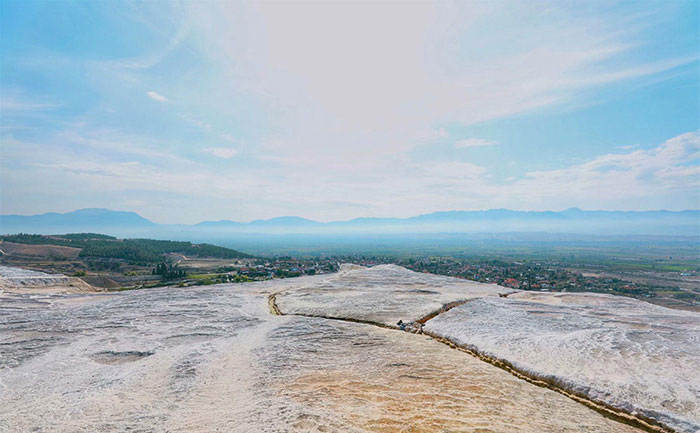
It is rare to find a hot spring with such limestone, so many visitors cannot contain their excitement and soak for a long time in the warm, clear water, enjoying its rare beauty.
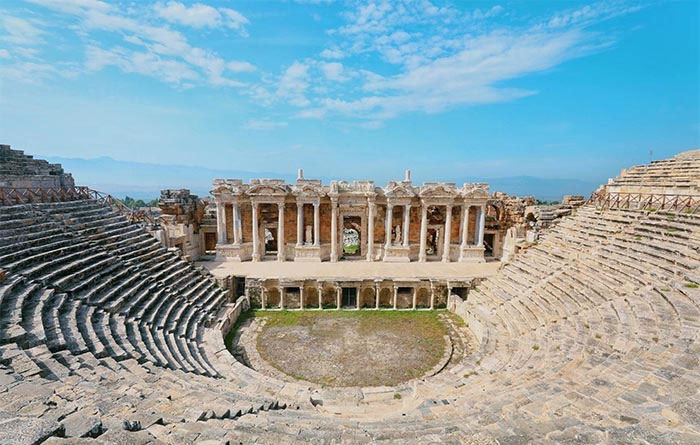
In addition to providing a refreshing feeling mentally, one should not underestimate the visual impact that Pamukkale brings.
From above, the Pamukkale hot spring terrace looks like a mirror, reflecting the blue sky and white clouds, while from below, it presents a spectacular sight resembling a volcano erupting with white lava covering the entire hillside.
Additionally, the famous ancient city of Hierapolis is located here, just a few steps away from Pamukkale. The Pergamon kingdom was first established in 190 AD and reached its peak during the 2nd to 3rd centuries AD.
Hierapolis was founded by the Attalid dynasty at the end of the 2nd century BC, and about 300 years later, the city was invaded by the Romans. Under Roman rule, Hierapolis became a famous resort known for its beautiful natural scenery, healing mineral springs, and renovated city structures such as domes, columns, and lecture halls that shone brightly under the golden sunlight.
However, Hierapolis is also famous throughout Rome for being considered the “Gateway to Hell,” leading to the world of the god Pluto and the three-headed dog Cerberus, which exudes toxic fumes in mythology. People from all over would pilgrimage here, sacrificing creatures to the god of the underworld in the Ploutonion temple. Rumors spread quickly, earning Hierapolis the nickname “the city of the dead.”
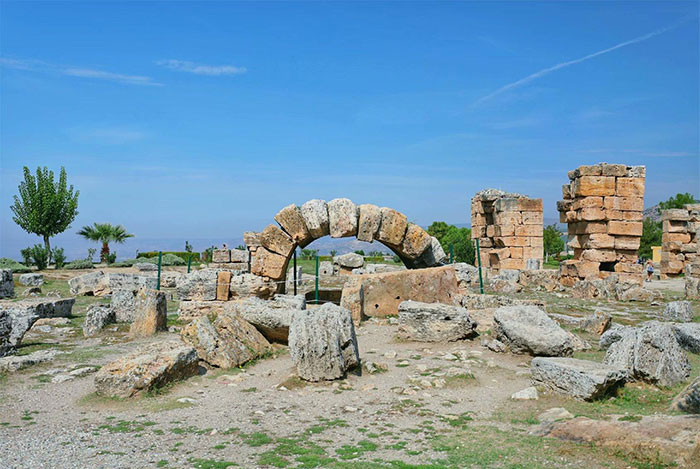
The ancient city of Hierapolis inherits the traditional style of Greece, with construction structures still bearing ancient marks. The houses were built alongside the streets, with alleys intersecting each other.
To this day, remnants such as large baths, an arena, a grand theater, and an ancient cemetery are still preserved. Among them, the Haier Poly theater is one of the most worthwhile places to visit.
The tombs in the ancient cemetery are made of beautiful marble, with intricately carved coffins, and only those of high status were buried in such a manner. The remaining ruins testify that this place was once very prosperous.





















































